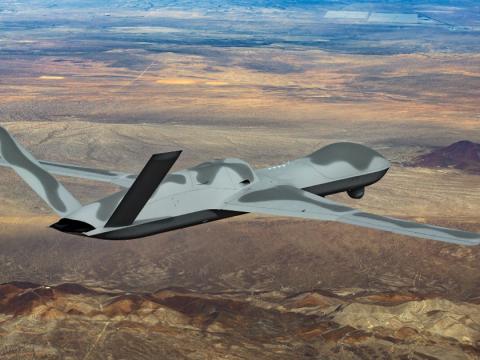The Cyber Implications of Acquisition Speed: Part IV
Fourth in an ongoing series of articles
One technique for speeding up the acquisition process is the use of open systems architecture. Employing open systems architecture (OSA) capabilities is the intelligent way to create next-generation solutions for warfighters in all services. OSA-based solutions can optimize scarce financial and engineering resources and enable the United States and its coalition partners to extend their strategic military advantages over global adversaries.
The U.S. Department of the Navy (DON) provides an example of OSA’s success. The DON initiated an open architecture policy in 2004. In 2010, the undersecretary of defense for acquisition, technology and logistics started the Better Buying Power initiative and asked the Navy to lead the OSA effort.
The DON is committed to continuous improvement of practices that open up systems and rapidly integrate innovation. The technologies and methods used to apply them are constantly in motion. Taking advantage of private-sector innovations will require rigorous engineering practices to provide the fleet, and all warfighters, with reliable and effective products. The combination of OSA and creative intellectual property strategies ensure that the Defense Department will be able to refresh technologies and risk-prudently pursue opportunities for competition, driving speed and lowering cost.
In 2011, the DON published an OSA strategy emphasizing affordable, open technical architectures that easily accommodate open performance capability modules. DON teams collaborated with government and industry across the program executive office and system command (SYSCOM) infrastructure to implement changes. The execution of this OSA strategy addressed improved competition; incentivized better performance; and measured increases in speed.
Both speed and flexibility are crucial to product development today. Systems must be updated quickly to address warfighting needs or to manage a capability gap. They also must address constantly changing cyberthreats. This necessitates a new way of doing business. Major all-or-nothing or high-risk upgrades are a thing of the past, giving way to an environment where government officials choose what to change and when based on business, technical and operational needs.
The DON is collaborating throughout the Defense Department to make OSA the first, best place to start future acquisitions. This would entail establishing OSA-based systems with severable modules the Defense Department could upgrade whenever it chooses. A well-documented and open technical architecture should support an open business architecture. This strategy gives the Defense Department the ability to provide warfighting capability through a spectrum of vendor-independent acquisition options. Successful OSA acquisitions avoid hefty total ownership costs associated with large single-vendor solutions and are responsive to changing user requirements.
This effort will build on naval OSA-based initiatives such as the Future Airborne Capability Environment (FACE), the UAS Control Segment (UCS) and the Consolidated Afloat Networks and Enterprise Services (CANES). By using OSA precepts, the Defense Department can strengthen its acquisition ecosystem via “alternative module providers”—no incumbent contractors—promoting competition and innovation.
Once established, the program offices can ensure that subsequent components can be integrated cost-effectively, tested rapidly and made available to warfighters on demand, regardless of who created them. Eventually this will change the underlying architecture of the Defense Department’s warfighting systems from a large collection of uncoordinated, noninteroperable systems built on unique design constructs to a cost-effective and coordinated enterprise product-line environment.
One of the often-overlooked elements of the transition to OSA is how and when to use the government’s right to intellectual property. Through the evolution of OSA, the DON has crafted a set of practices for managing intellectual property that will attract more industrial partners to the defense market. The first principle is to ensure that the approach to intellectual property captures the taxpayer’s investment. If the Defense Department pays for something, then the department needs to assert its rights to share it while still protecting its investments in Small Business Innovation Research (SBIR)-derived projects, new capabilities gleaned from independent research and development and legitimate commercial products. Only when the department manages this as an ecosystem through a well-publicized intellectual property strategy will it be able to functionally change how it interacts with industry.
The Defense Department also must attend to its fiduciary responsibility to the taxpayer and not overpay for investments. And it must establish an open market to field new ideas quickly without having to use predatory data rights practices.
This strategy will allow the department to establish a new remuneration model that rewards private investment, robust design and rapid integration and avoids product development outlays, schedule delays and cost overruns typical—and now almost expected—in defense acquisitions.
Nickolas Guertin and James P. Craft are members of the AFCEA International Cyber Committee.



Comments